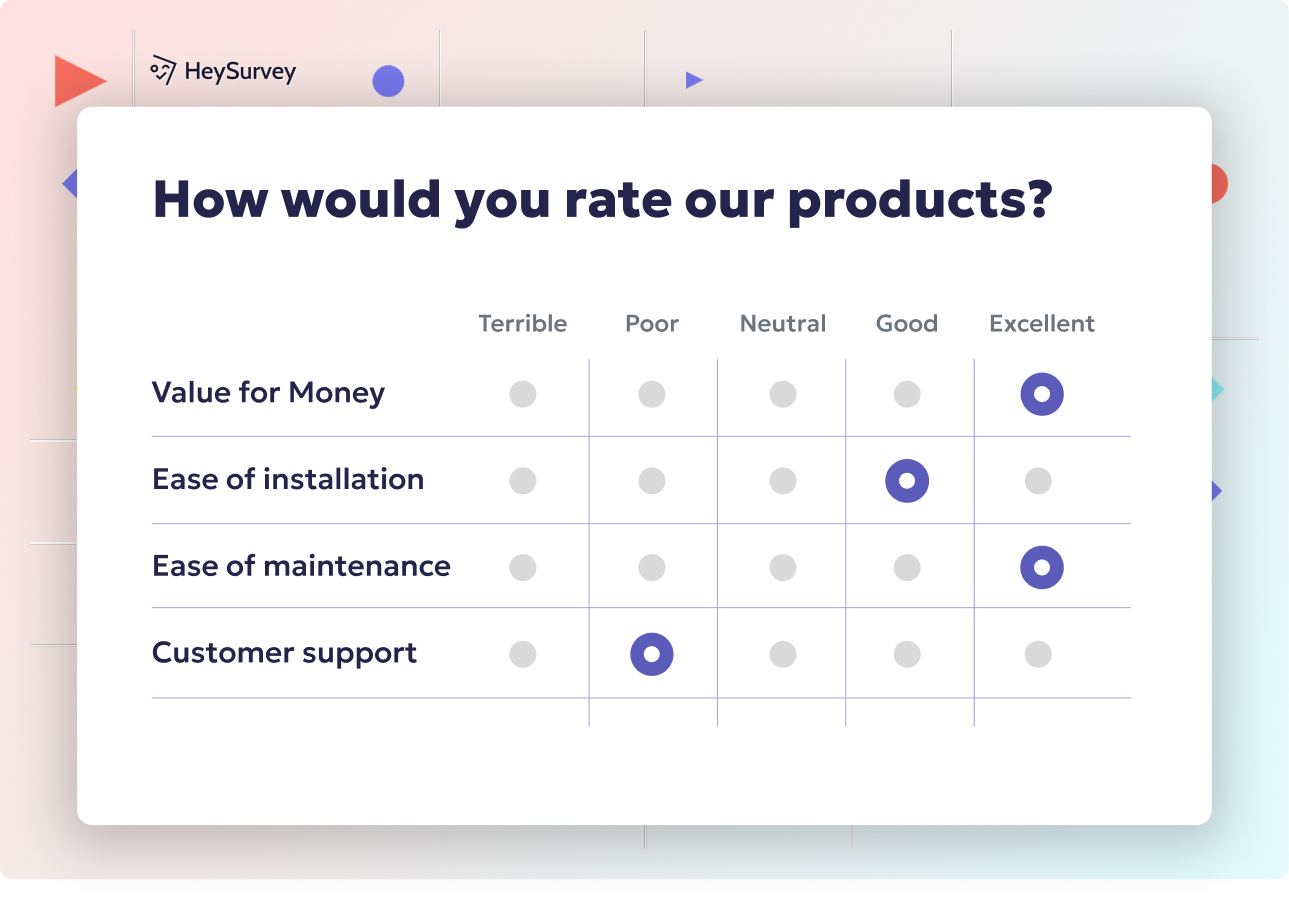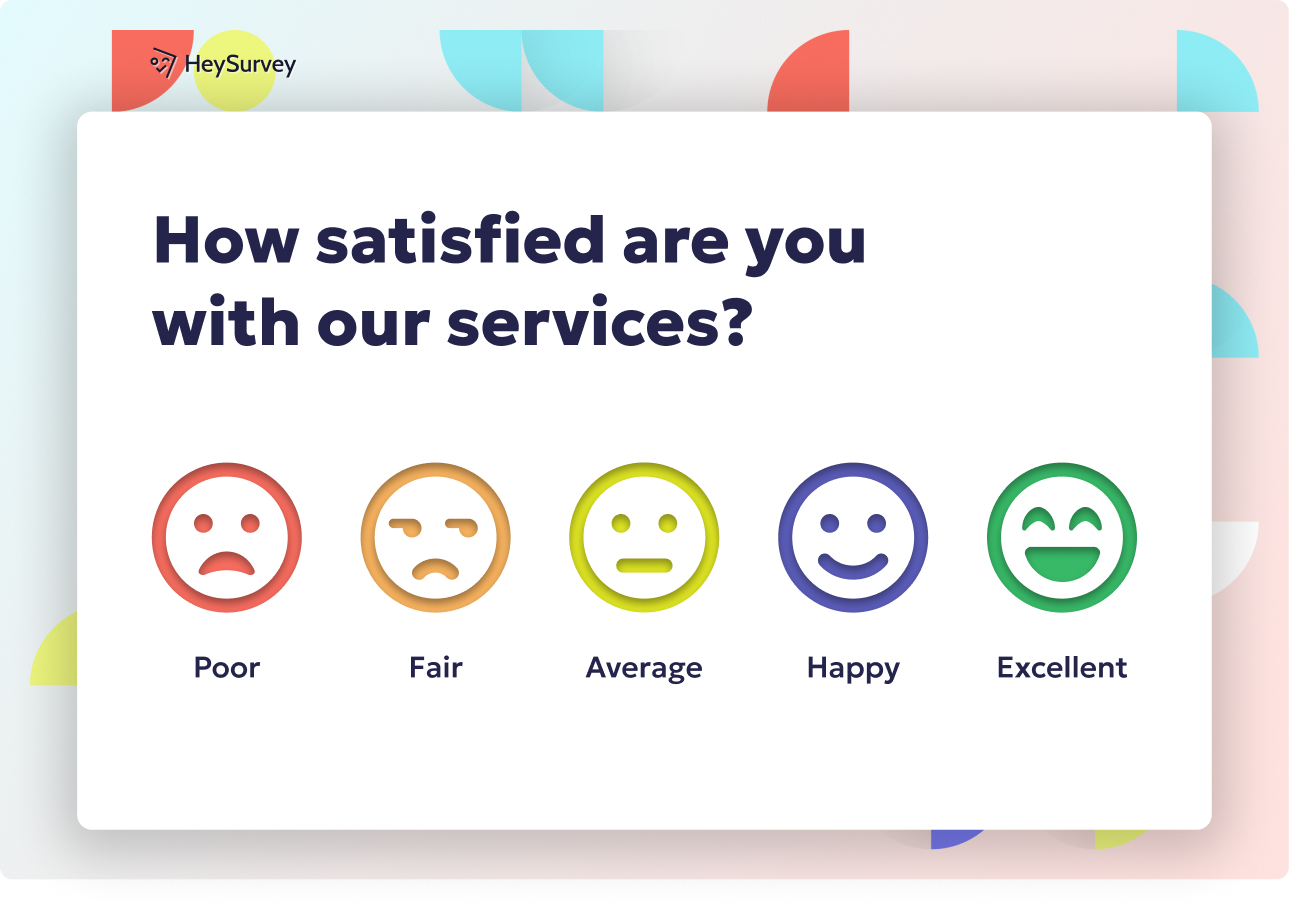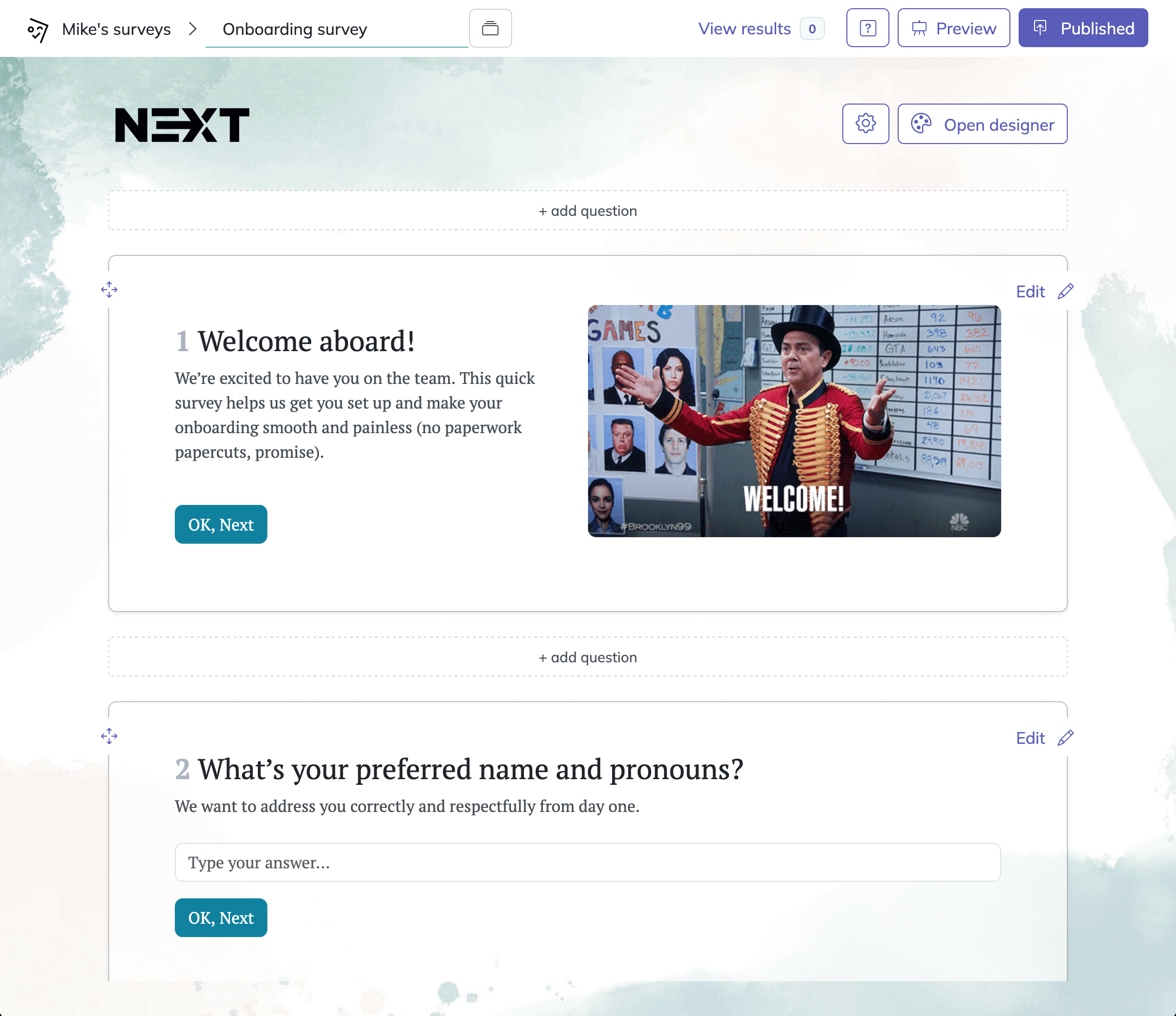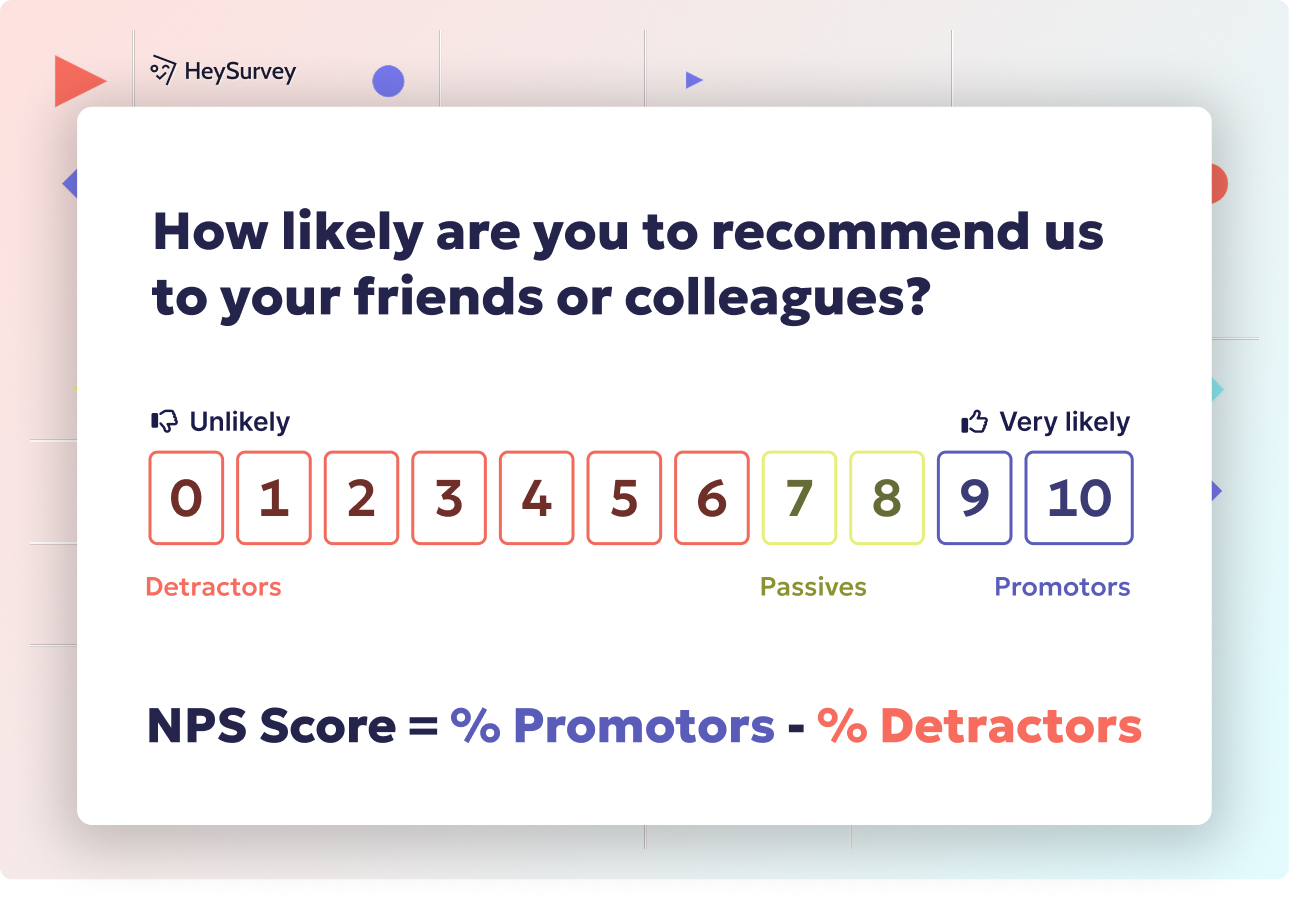31 Expert Samples: What Is a Scale Survey Question Explained
Discover what is a scale survey question, explore 8 types with 30+ expert sample questions to measure opinions and gather actionable data.
What is a scale survey question, and why do so many organizations swear by them? A scale survey question asks people to rate something on a sliding or numbered scale, making responses easy to measure and compare. If you want to measure intensity, quantify opinions, or gather actionable data, scale questions are your secret weapon. In this guide, you’ll explore eight tried-and-true types of scale survey questions. Get ready for expert use-case tips and real-world examples to help you ask better questions and get more useful answers.
Likert Scale Questions
What Is a Likert Scale Question?
Ask almost any researcher, and they’ll tell you: the Likert scale is a classic tool for making opinions measurable. In its most familiar form, it comes as a 5-point or 7-point scale, providing nuanced shades between “strongly agree” and “strongly disagree.” Whether you call them “agreement scales” or “satisfaction scales,” you’re tapping into the power of the Likert approach.
The beauty of a Likert scale is how easily it transforms fuzzy feelings into neat, analyzable numbers. You’ll frequently bump into two major flavors:
- 5-point Likert scale: Perfect for quick takes—think “strongly agree” to “strongly disagree” with a comfortable middle option.
- 7-point Likert scale: Delivers extra detail for when you really want to capture subtle differences in sentiment.
You can easily tweak Likert wording to fit your needs, swapping “agreement” for “importance,” “satisfaction,” or “frequency”—whatever suits your survey best.
Why & When to Use Likert Scale Questions
Likert scales aren’t built for every occasion, but they’re simply ideal for gauging attitudes or agreement levels. They’re the darling of HR teams measuring employee engagement and customer service managers hunting honest feedback. Use them when you need:
- Attitudes: Find out how much people agree or disagree.
- Satisfaction: Discover how happy (or not!) users are.
- Behavioral intent: See if people plan to recommend, repurchase, or return.
- Event feedback: Gather quick impressions after a meeting or seminar.
- Employee pulse checks: Keep tabs on team morale.
The Likert scale lets you quickly quantify opinions without overwhelming your audience with complicated grids or prose-based answers.
5 Sample Likert Scale Questions
How strongly do you agree that our onboarding process was clear?
The product met my expectations.
I am likely to renew my subscription.
The instructor explained concepts effectively.
I feel valued as an employee here.
Likert scales are widely used in research to quantify attitudes and opinions, offering a structured method to capture nuanced responses. (en.wikipedia.org)

How to Create a Scale Survey Question Survey with HeySurvey: 3 Easy Steps (Plus Bonus Tips!)
If you’re new to HeySurvey and want to create a survey with any of the awesome scale survey question types covered earlier, here’s your simple, no-fuss guide. In just a few clicks, you’ll go from a blank canvas to a shiny, sharable survey. Ready? Let’s get started!
Step 1: Create a New Survey
- Head over to HeySurvey and either sign up for an account or start without one.
- Click the big, inviting Create New Survey button.
- Choose Start from Template if you want a helpful head start (there’s usually a handy scale survey template you can open with the button below these steps).
- Or pick Empty Sheet if you want total creative freedom from scratch.
- Give your survey a name (you can always change it later), and jump right into the Survey Editor.
Step 2: Add Questions
- Click the bright Add Question button at the top or between existing questions.
- Select the question type that best fits the scale you want to use—whether it’s a Likert scale, NPS, Numerical Rating, or any other scale type you fancy.
- Type in your question text, and tweak the labels or anchors (like “Strongly Agree” to “Strongly Disagree” or “0–10”).
- If needed, set the question as Required so respondents can’t skip it.
- Feel free to add images, descriptions, or use markdown formatting to jazz up your questions.
- Add as many questions as you want, mixing scale question types for richer data.
Step 3: Publish Your Survey
- Click Preview to see your survey just like your respondents will.
- Adjust visuals or wording if something looks funky.
- When satisfied, hit Publish—note you’ll need an account to publish and collect responses.
- Grab your shareable link or get the embed code to place your survey on your website or send it via email.
Bonus: Customize and Refine
- Apply Branding: Upload your logo and customize colors and fonts via the Designer Sidebar to make your survey uniquely yours.
- Define Settings: Set start and end dates, response limits, redirects, and decide if respondents can view summary results after completion.
- Skip Logic & Branching: Want respondents to skip irrelevant questions based on their answers? Use branching to create smooth, personalized survey paths.
By following these steps, even first-timers can whip up professional, data-ready scale surveys quickly with HeySurvey. Why not start now? Go ahead and click below to open a ready-made template and give it a whirl!
Semantic Differential Scale Questions
What Is a Semantic Differential Scale?
If you ever wanted to see how people really feel—without giving them a speech balloon—the semantic differential scale is genius. This bipolar adjective scale asks respondents to mark their spot between two opposite descriptors, like “old-fashioned” and “modern” or “easy” and “difficult.”
Rather than just measuring “how much” of something, the semantic differential scale reveals the quality and flavor of attitudes. Instead of “from 1 to 5, how do you feel?” you’ll ask, “Where do you fall between ‘inviting’ and ‘cold’?”
The power of this tool is its subtlety. It doesn’t pigeonhole someone into “agree” or “disagree”—it invites shades of meaning.
Why & When to Use Semantic Differential Scale Questions
Semantic differential scales are best for mapping nuanced attitudes and emotional responses. Think of them as emotional x-rays for:
- Brand perception: See if your brand comes across as fun, serious, trendy, or outdated.
- User experience (UX) studies: Pinpoint where your website or app feels complicated vs. straightforward.
- Emotional response mapping: Understand if customers find you inspiring or intimidating.
- Product positioning: Check if a product seems premium vs. budget.
Instead of forcing a simple yes/no, you get to hear what people really think—without the fuss of open-ended responses.
5 Sample Semantic Differential Scale Questions
Rate our mobile app: Difficult —— Easy
The brand feels: Outdated —— Modern
Customer service was: Unhelpful —— Helpful
Website speed is: Slow —— Fast
Packaging appears: Cheap —— Premium
Semantic differential scales effectively capture nuanced attitudes by measuring perceptions along dimensions like evaluation, potency, and activity. (simplypsychology.org)
Numerical Rating Scale (NRS) Questions
What Is a Numerical Rating Scale?
You’ve probably seen the classic “On a scale from 0 to 10”—that’s a Numerical Rating Scale (NRS) in action. This scale asks people to pick a number that sums up their experience or feelings, with the meaning clearly anchored at each end (like “not painful at all” vs. “worst pain imaginable”).
Sometimes called a 0–10 rating scale or a “verbal descriptor anchor” scale, NRS questions are refreshingly straightforward. Sticking a number on a feeling may sound unimaginative, but it’s incredibly powerful for quick measurement and comparison.
These scales come in handy when time is tight, the setting is clinical, or you want to avoid survey fatigue.
Why & When to Use Numerical Rating Scale Questions
Whenever you need a fast, clear reading on intensity—without the ambiguity of words—the NRS delivers. It’s beloved in:
- Clinical studies: Measuring pain, anxiety, or other symptoms.
- Customer satisfaction checks: If you need a rapid-fire way to see how people rate your service.
- Employee confidence levels: Quickly find out who feels confident with new software or policies.
- Product launches: Get instant reactions on new features or offerings.
By asking respondents to put a number to their experience, you achieve consistent, quantifiable data that’s simple to analyze and share.
5 Sample Numerical Rating Scale Questions
On a scale of 0–10, how would you rate today’s webinar?
How intense is your current back pain?
Rate your overall hotel stay.
How confident are you in using this software?
How likely are you to attend future events?
Visual Analog Scale (VAS) Questions
What Is a Visual Analog Scale?
Picture a horizontal line with words at each end—like “no stress” and “very stressed.” Now imagine sliding a marker anywhere along it. That’s the magic of a Visual Analog Scale (VAS). Sometimes called a slider scale or continuum line, it’s the closest thing to reading a mind with a ruler.
Respondents don’t just pick a box or circle a number—they drag a slider or tap along a bar, landing exactly on the spot that reflects how they feel. It’s tactile, fun, and surprisingly informative.
The VAS is a darling for mobile surveys and research where subtle feelings matter. Respondents feel less boxed in because they aren’t shoehorned into categories.
Why & When to Use Visual Analog Scale Questions
Visual analog scales are your go-to for measuring nuanced, continuous experiences. They’re perfect for:
- Mobile surveys: Respondents can just slide their finger, making VAS very mobile-friendly.
- Health research: Capture subtle shifts in feelings like pain, fatigue, or anxiety.
- UX and design studies: Measure reactions to visual or sensory stimuli.
- Low-verbal populations: Great for people who struggle with words—sliders make answering easy.
Surveys become more engaging and expressive, and the results can be incredibly precise.
5 Sample Visual Analog Scale Questions
Drag the slider to show your current stress level.
Indicate how energized you feel after drinking the beverage.
Show how visually appealing you find the homepage.
Mark your satisfaction with delivery speed.
Indicate your hunger level right now.
Visual Analog Scale (VAS) items are less susceptible to confounding factors and ceiling effects compared to symmetric Likert scales, making them advantageous in patient satisfaction surveys. (pubmed.ncbi.nlm.nih.gov)
Stapel Scale Questions
What Is a Stapel Scale?
Meet the quirky cousin of the survey family—the Stapel scale. This unipolar numeric scale runs from positive numbers through zero to negative numbers, like –5 to +5. There’s no pair of adjectives—instead, respondents score a single attribute on a scale built around a neutral midpoint.
Originally designed to be space-efficient (no adjectives to squeeze onto the page), the Stapel scale helps you measure the strength or weakness of an attribute by seeing just how far respondents will travel from “meh” to “marvelous.”
Think of it as a thermometer for things like customer support, brand trust, or product features.
Why & When to Use Stapel Scale Questions
A Stapel scale shines when you want to measure how strongly someone feels about a single attribute, but can’t—or don’t want to—frame it as “good” vs. “bad.” You’ll find it especially handy for:
- Quick feedback: When space is at a premium and you want lots of answers fast.
- Attribute assessment: Rate specific qualities like durability, trust, or fairness.
- Eliminating adjective bias: Sometimes it’s easier just to ask for a score on “customer support” rather than picking two polar opposites.
- Multinational use: Fewer adjectives mean fewer translation headaches.
Add it up and you get clear insight on individual aspects of a product or experience without overcomplicating your wording.
5 Sample Stapel Scale Questions
Rate “Customer Support” from +5 (very strong) to –5 (very weak).
Evaluate “Ease of Navigation.”
Score “Product Durability.”
Judge “Price Fairness.”
Assess “Brand Trust.”
Net Promoter Score (NPS) Scale Questions
What Is a Net Promoter Score (NPS) Scale?
If you’ve ever been asked, “How likely are you to recommend us to a friend, on a scale of 0 to 10?”—congratulations, you’ve met the Net Promoter Score (NPS) scale. This 0–10 loyalty scale is world-famous for capturing one thing: how loyal your customers really are.
The idea is brilliantly simple: people who score 9-10 are “Promoters,” 7-8 are “Passives,” and 0-6 are “Detractors.” The higher your score, the more likely your company is to have raving fans instead of quiet quitters.
NPS is so important to some organizations that it’s become a boardroom KPI. That’s right—a single number can spark celebration… or crisis talks.
Why & When to Use NPS Scale Questions
You use an NPS question when you care about customer loyalty and word-of-mouth power. It’s not just about customer service; it’s about obsession-worthy experiences. NPS works its magic in:
- Tracking loyalty over time: Are you building a tribe, or just an audience?
- Benchmarking: See how you stack up against peers.
- Product or feature feedback: Launch something new? Instantly gauge the fans vs. fence-sitters.
- Executive dashboards: NPS is easy to explain at all levels.
- Event follow-up: Did your conference create ambassadors or just tire out attendees?
NPS isn’t a deep dive—but it delivers lightning-fast insight into whether your users are wowed or underwhelmed.
5 Sample Net Promoter Score Scale Questions
How likely are you to recommend [Brand] to a friend? (core NPS)
Rate your likelihood to recommend our support team.
Recommend our mobile app?
Recommend our new feature set?
Recommend our event to colleagues?
Constant Sum Scale Questions
What Is a Constant Sum Scale?
Ready for some mental math? The constant sum scale asks respondents to distribute a fixed total—like 100 points, dollars, hours, or percentages—across a list of items. Where most scales ask you to pick one rating per question, this scale digs deeper, forcing people to prioritize what matters most.
Instead of ranking or rating, respondents actually “invest” their limited “currency” into what they care about—making trade-offs and revealing priorities.
This simulates real-world decisions: It’s not just about liking everything, but choosing what’s most important when resources are scarce.
Why & When to Use Constant Sum Scale Questions
Constant sum scales are tailor-made for resource allocation and prioritization studies. They work wonders when you want to understand:
- Feature priorities: Which options would users upgrade or pay more for?
- Budget allocation: See how people spread their advertising dollars.
- Time tracking: Find out where energy, hours, or focus fall during a typical day.
- Product development: Understand trade-offs people make between price, quality, speed, etc.
- Donor or values research: Figure out which causes matter most to your audience.
By forcing choices, the constant sum scale delivers an honest hierarchy of priorities.
5 Sample Constant Sum Scale Questions
Allocate 100 points across these product features based on importance.
Distribute $100 across advertising channels you plan to use.
Split 10 hours among support tasks you perform weekly.
Assign 100% to meal attributes influencing your choice.
Divide 100 points among causes you care about.
Best Practices: Dos & Don’ts for Writing Scale Survey Questions
Writing great scale survey questions is an art—a few smart tricks can make your data more reliable and your respondents happier. Let’s run through the dos and don’ts.
Do keep scale lengths consistent across your survey. Jumping between 5-point, 7-point, and 10-point scales is dizzying and leads to apples-to-oranges comparisons. Stick to one length per survey if possible.
Don’t mix up your anchors or endpoints. Always label your scales clearly and with balanced language—“Strongly Agree” and “Strongly Disagree” must feel equally extreme. Loaded language or vague terms can bias results and frustrate participants.
Do pilot test your scale questions. Even the experts get tripped up by ambiguous instructions or unclear wording. Let a few people try your survey first to spot hiccups before you launch to the world.
Don’t assume people interpret scales the same way. One person’s “satisfied” might be another’s “meh.” Use clear descriptors and, if needed, include examples in your instructions.
Do choose your scale type to match what you’re measuring. NPS for loyalty, Likert for attitudes, VAS for feelings—don’t just use your favorite scale on every question for convenience.
Don’t use a scale question when an open-ended prompt is better. Not everything can (or should) be squeezed into numbers.
Do optimize for mobile devices. Use large tap targets, clear labels, and make sure slider questions work with a finger, not just a mouse.
Don’t forget about accessibility. Make sure your scales can be read by screen readers and don’t rely only on color to communicate key information.
Follow these simple best practices and your scales will serve up insights that are not just statistically sound, but actionable and easy to use.
In summary, scale survey questions are the secret sauce for capturing nuanced customer and employee sentiment. Whether you’re measuring loyalty, satisfaction, or brand perception, the right scale makes all the difference. Choose wisely, write clearly, and don’t forget to test before you send. Better questions lead to better data—that’s the magic of scales.
Related Scale Types Surveys

30 Rating Scale Survey Questions Examples to Boost Feedback
Discover 25+ rating scale survey questions examples with tips for Likert, numeric, star ratings, ...

29 Psychology Survey Example Questions & Best Practices Guide
Explore 25 expert psychology survey example questions covering personality, mental health, motiva...

32 Likert Scale Survey Questions Examples: Ultimate Guide
Discover 25+ Likert scale survey questions examples and expert tips for crafting powerful, data-d...
